Radio held a special place in the lives of many service men and women during and after World War II. The War Department recognized the need for entertainment and an audible link home early in the War. Short-wave radio systems were put in place to inform, educate, and most of all, entertain the troops at home and abroad.
The Armed Forces Radio Services, which supplied much of the programming for the audiences in uniform, was formally established in May 1942. Based in Hollywood, the AFRS team recorded transcription discs of appealing programs from commercial stations and produced its own shows. Programs such as the write-in show “Mail Call” and "G.I. Journal" with popular music, "Jubilee," produced by and for African Americans. "G.I. Jive” with the soldier favorite, ‘GI Jill,’ directly addressed soldiers' need for familiar information and entertainment as a distraction from the war around them.
AFRS shows were heard in the European and Pacific theaters, mostly through the American Forces Network (AFN) system. They generated an astounding amount of material. By October 1945, 117,695 show transcription recordings had been pressed, amounting to about 20 hours of original programming each week! Due to their strict focus on military audiences and the government support, AFRS had access to the best writers and performers without regard to contracts, network limitations, or financial considerations. Time and talent were donated and because the 1942-44 musicians’ strike stopped commercial recordings, many AFRS programs of the time are considered rare and great performance recordings of world-class artists.
This sonic morale booster for the troops overseas was vital during the holidays, when the juxtaposition between holiday cheer and dangerous lived realities must have been even more palpable. In such time, radio programming can and was used to connect and create a sense of community despite physical and psychic distance from home, and to combat loneliness.
We still have access to some of the AFRS programming today, and a sampling of Christmas recordings provide an emotive glimpse into the holiday seasons between 1941-1945.
Command Performance is the most well-known of the AFRS shows today and was one of the most popular shows at the time as well. All the big names of radio and film appeared at least once in this production. In this star-powered variety show, servicemen could request what and who they’d want to hear—requests that became a ‘command’ for the entertainers. The key to both AFRS and AFN broadcasts was that it was produced by and for servicemen. All contracts and regulations were based on that fact. So, as ubiquitous as Command Performance was with servicemen, civilian listeners were largely unaware of the show’s existence.
This changed Christmas Eve 1942, when a special program was broadcast to forge a link between the home front and servicemen in the war zones. All four networks and most independent stations carried the Command Performance Christmas program—as did AFN of course—on Christmas Eve 1942.
The program begins with a message from Elmer Davis, Director of the Office of War Information, who explains the purpose of the special occasion, then Bob Hope takes to the mic. As was the case for most of the shows, he is joined by Bing Crosby in some comedic back-and-forth as they envision a world after the War. The music mix in this first Command Performance Christmas show is one of the more eclectic ones, ranging from the pop sweetness of the Andrews Sisters to bluesy Ethel Waters and wholesome Dinah Shore. It is mixed with comedy bits by entertainer and radio personality Red Skelton, a rendition of "Basin Street Blues," the gospel and pop vocal group the Charioteers backing Bing Crosby, and “Praise the Lord and Pass the Ammunition” by frequent guest, Kay Kyser.
Bob Hope hosting a Command Performance broadcast with Jane Russell and Major Meredith Willson conducting the AFRS band in the background. Image courtesy of Armed Forces Radio and Television Service Collection.
Not all jokes on Command Performance aged well, and some of the performances and musical pieces are corny and outdated. However, broadcast magazine Variety at the time commented on the "robust" language of the program. None of that hurt the program’s success, which had an incredible 95.5 million weekly listening audience.
A year later, 1943 Command Performance’s Christmas Special exceeded itself in length, joviality, and variety. Ninety minutes were again filled with “the greatest entertainers of America” that were “on the air every week 'til it's over … over there”. This “super colossal” show was again hosted by Bob Hope, and we hear a fascinating mix between somber and comical, as the funny antics of Bob Hope and Jimmy Durante, musical numbers by Dinah Shore and Kay Kyser, and mailed-in greetings from across the world are interspersed with Christmas messages from Army Chief of Staff General George C. Marshall, Secretary of the Navy Frank Knox, and Secretary of War Henry L. Stimson.
The episode is particularly interesting since it pays tribute not only to American soldiers, but also tips the hat to all Allied servicemen by reading both the letter of a British infantryman and a Canadian airman. Producer Louis Cowan with the OWI had conceived of the show as a mail-in of requests through their nearest Army Post Office or Fleet Post Office, (referred to often in the show by their number) and adding more diverse voices only illustrates the show's groundbreaking appeal.
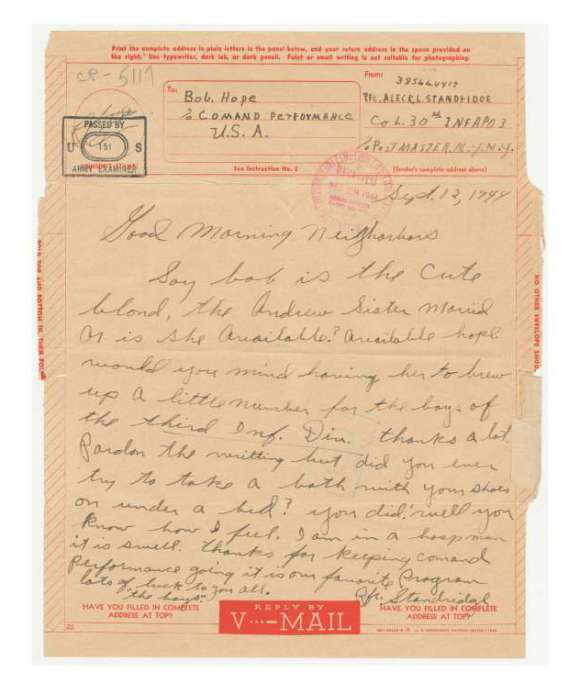
Mail Call: Bob Hope and “Command Performance”
“While some high school letters are worn on sweaters, your letters are next to our hearts.”
Command Performance was not the only show with Christmas programming by AFRS. In 1944, for example, they produced the Christmas Eve show of The Jack Benny Program. After the typically jocular plot ends with the crew gathered around the Christmas tree, the popular radio-then-TV comedy series ends on a somber tone. Benny takes the mic to address all servicemen, offering them a toast, acknowledging that “this is war” and that the “Christmas spirit must seem a very distant thing.”
Group photograph of Eddie Anderson, Dennis Day, Phil Harris, Mary Livingstone, Jack Benny, Don Wilson, and Mel Blanc of the Jack Benny Program circa 1947. Image courtesy of Wide World Photos.
Christmas 1945 takes on a different note, when we hear the first peacetime Christmas program recording. It’s “a happy Christmas” as is noted throughout and feels like a concluding bookend to the prior shows (though Command Performance would be on the air for another four years). The guests have been on before, jokes about Christmas shopping sound like the ones Bob Hope made a couple of years prior, but now we’re hearing it as an unfettered possibility. Overall, the show seems merrier, more relaxed, less burdened by reality. We are listening to Bob Hope trying to convince his guests, which include the ubiquitous Bing Crosby, Dinah Shore, Jimmy Durante, Frank Sinatra, and Judy Garland, to join his Christmas Party. The verbal fight between Frank Sinatra and Bing Crosby is a funny highlight. However, though many servicemen will not spend their holidays at home, the mood is celebratory and the show ends with a Christmas message from President Truman.
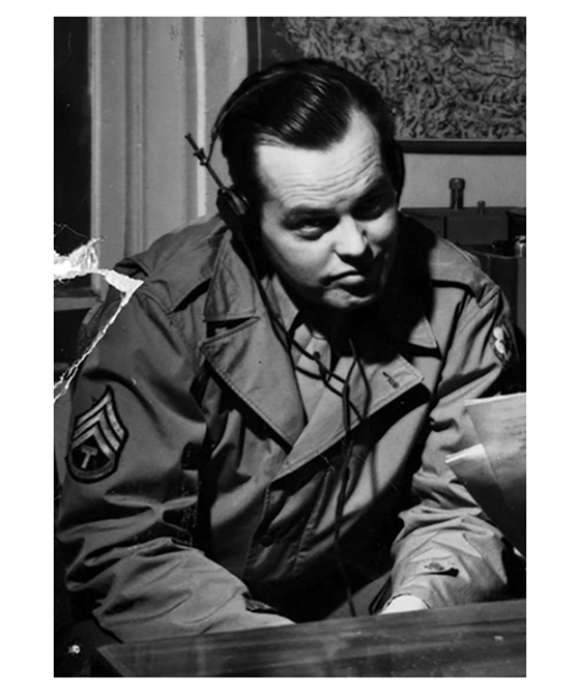
Democracy on a Dial: A Short History of AFN in Europe
AFN, the American Forces Network, was radio at its best: as the audible link to home for many soldiers fighting in Europe, it was a musical distraction, a news service, a way to stay up to date on sports, and finally, an unintended ambassador of the American way of life.
Tanja B. Spitzer
Tanja B. Spitzer, a native of Germany who came to New Orleans a little over a decade ago to study at Tulane University, is an expert on transatlantic history and cultural diplomacy.
Cite this article:
MLA Citation:
APA Citation:
Chicago Style Citation:
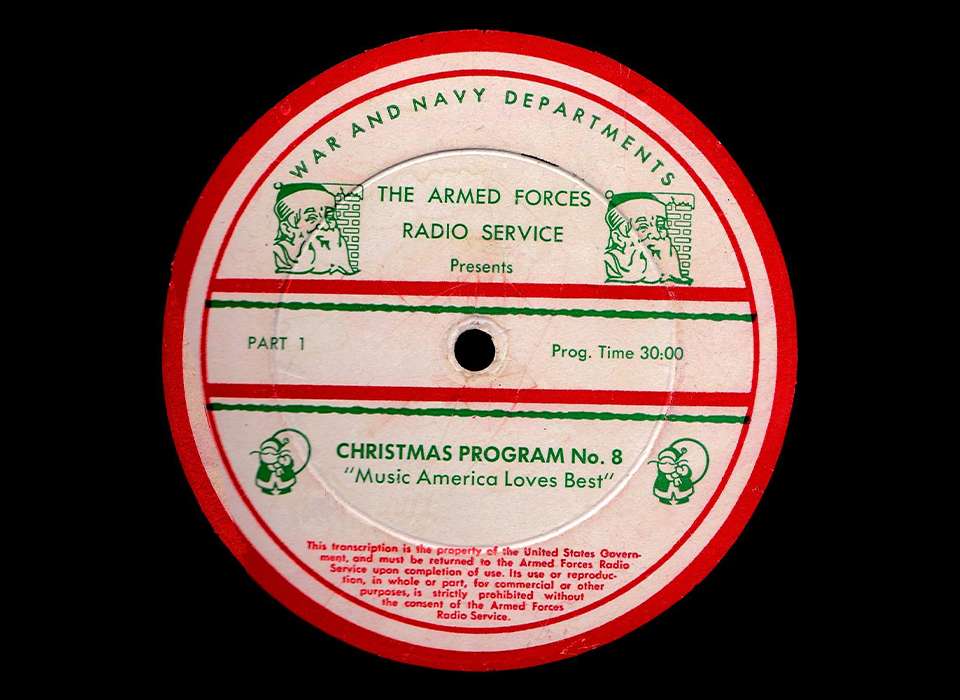
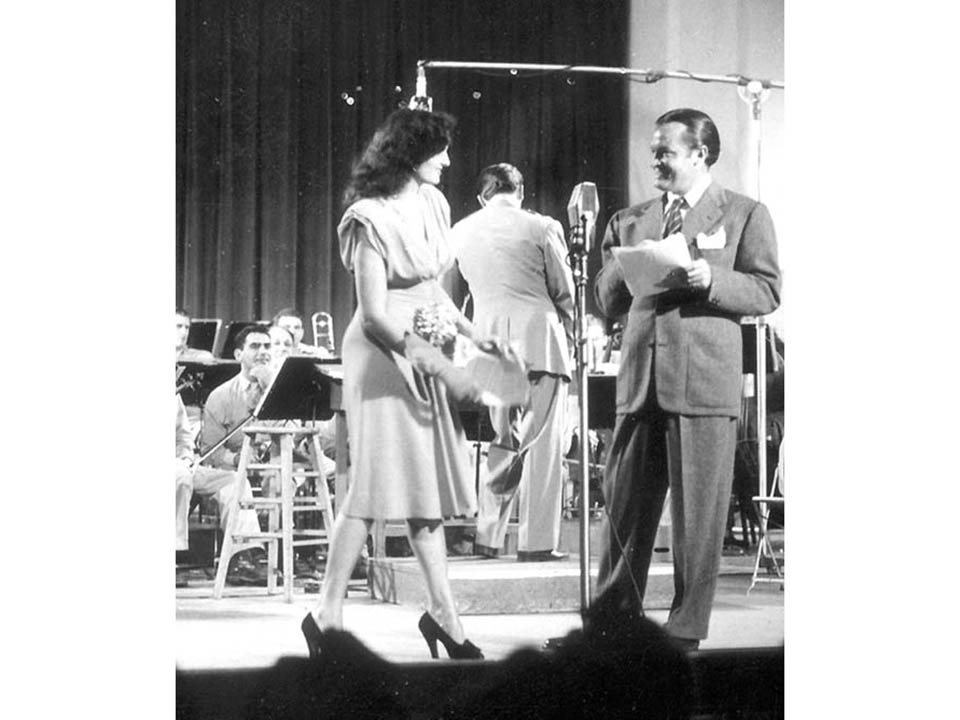
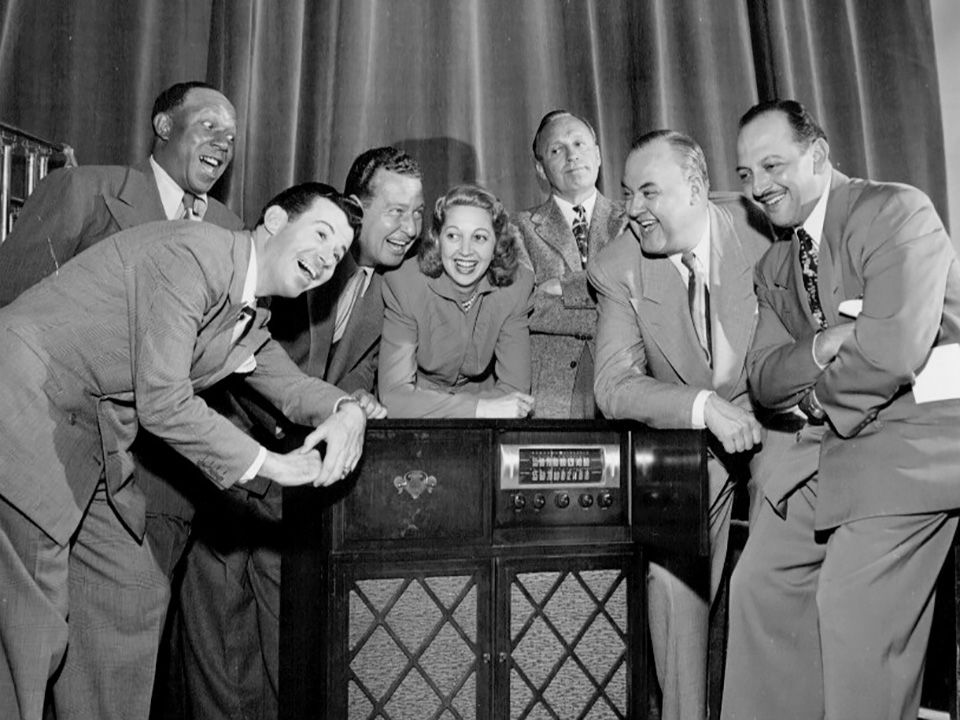





![Max Fuchs, New York City cantor, sings as Rabbi Sydney [sic] Lefkowitz, Richmond, VA, conducts the first Jewish services from Germany.](/sites/default/files/styles/max_650x650/public/2025-10/image1.jpg)


